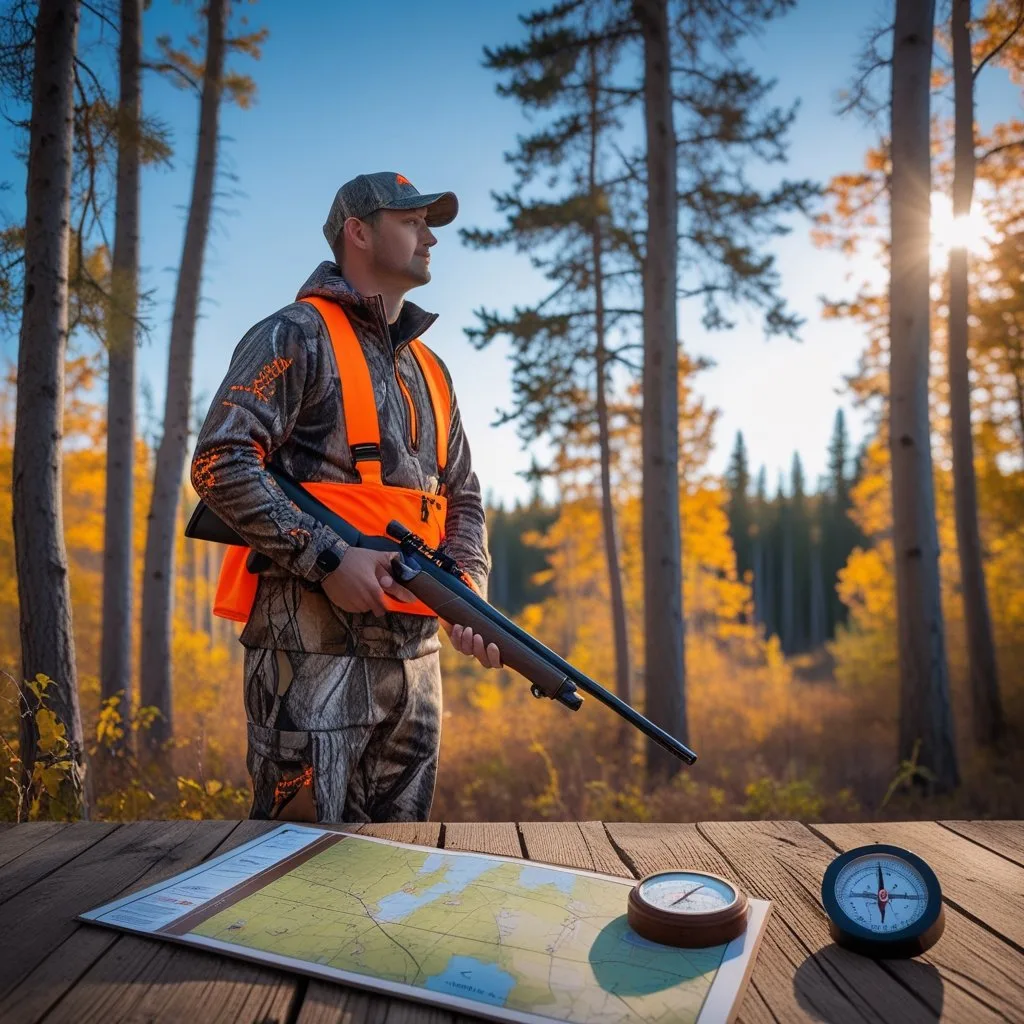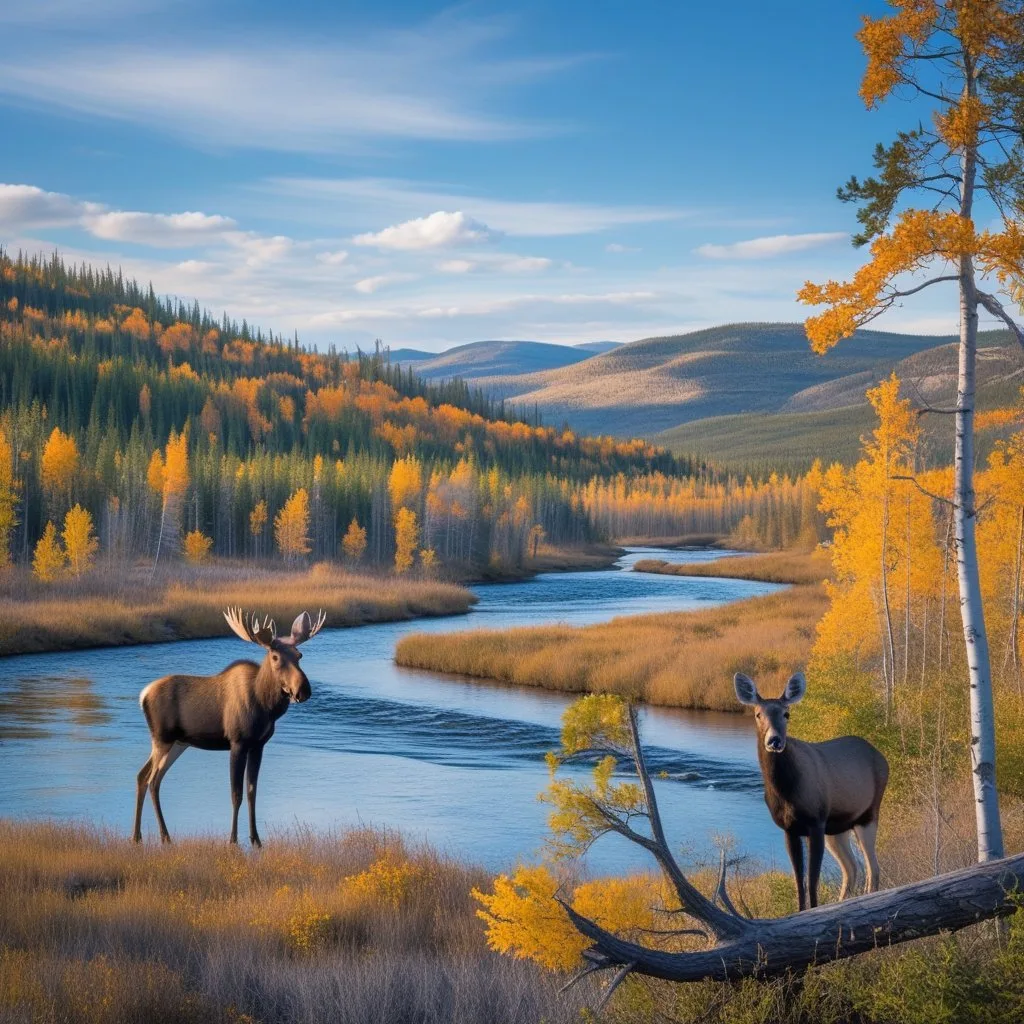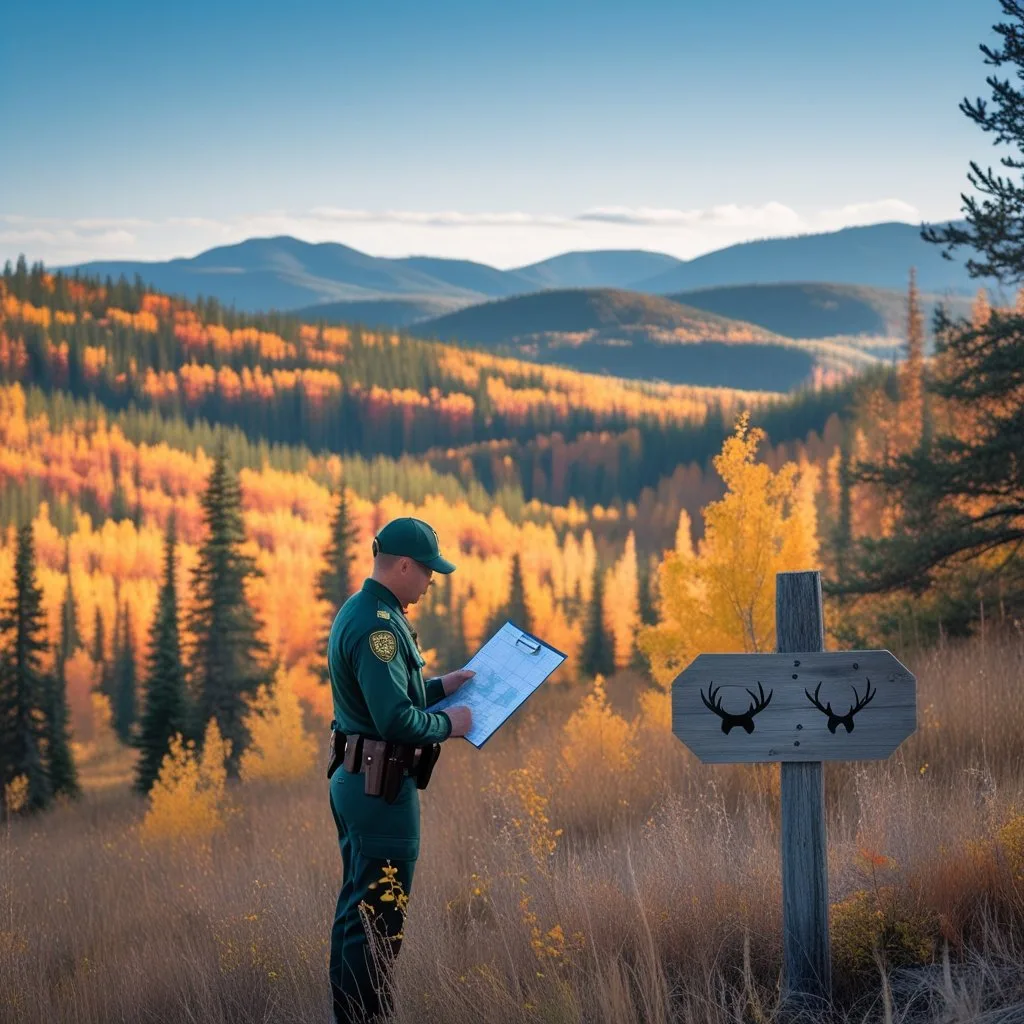Alberta Hunting Regulations 2025. Alberta rolled out big changes to its hunting rules in 2025, and honestly, every hunter should pay attention. The 2025 Alberta hunting regulation updates brought in 38 new rules as of May 21, 2025, touching everything from youth hunting ages to weapon and licensing requirements.

These updates change how you hunt, what you can hunt, and even what weapons are fair game. They also tweak residency and special licensing requirements.
Some of these changes make life easier for hunters, while others add new hoops to jump through. It’s a mixed bag, honestly.
Before you head out, take time to look over these new rules. The Alberta Guide to Hunting Regulations gets a fresh update every July, so it’s your best bet for the latest info.
Break the rules, and you could face fines—or even lose your hunting privileges.
Key Takeaways
- Alberta made 38 hunting regulation changes in May 2025—affecting licenses, weapons, and procedures
- Youth can now hunt big game at age 10, and you don’t need a crossbow permit if you have medical justification
- Tracking dogs are now allowed for game recovery, and weapon options expanded for some species
Alberta Hunting Regulations 2025 and Licensing
In May 2025, Alberta changed up hunting regulations again. Residency rules shifted, and the minimum bow draw weight dropped.
You need different licenses for different game. Youth hunters can now start big game hunting at just 10 years old.
Key Changes for 2025 – Alberta Hunting Regulations 2025
The Alberta government updated the Wildlife Act on May 21, 2025. These changes aim to modernize the rules using current science and tech.
| Species | WMU Zone | Season Start | Season End |
|---|---|---|---|
| White-tailed Deer | 100–200 | September 1, 2025 | November 30, 2025 |
| Mule Deer | 300–400 | September 17, 2025 | November 30, 2025 |
| Elk | 300–500 | September 1, 2025 | October 31, 2025 |
| Moose | 200–400 | September 24, 2025 | November 30, 2025 |
| Black Bear | All WMUs | August 25, 2025 | October 31, 2025 |
Residency Requirements
To qualify as a resident hunter, you now have to live in Alberta for at least six months. You still need to be a Canadian citizen or permanent resident, too.
Weapon and Ammunition Updates
The minimum bow draw weight is now 35 pounds for a 28-inch draw. You can use centrefire .22 cartridges, like .223 and .22-250, for big game.
Crossbow Changes
No more crossbow permit required—but you do need a signed medical assessment form if you’re using one during archery season. That part hasn’t changed.
New Hunting Opportunities
You can shoot migratory birds from unanchored, powered boats, as long as the motor’s off. Black bear hunting with dogs is now legal in certain Wildlife Management Units during September and October.
Types of Hunting Licences and Applications
Alberta has several license types, depending on what and how you hunt. Buy licenses and enter draws through the Alberta RELM system.
Basic License Categories
- Big Game Licenses: Deer, elk, moose, bear, and similar
- Game Bird Licenses: Ducks, geese, upland birds, turkeys
- Special Licenses: Draw-based, for those hard-to-get hunts
Application Process
You need a Wildlife Identification Number (WIN) before buying any license. The Alberta Guide to Hunting Regulations comes out every July and covers all the details.
Undersubscribed Licenses
Now, you can buy one undersubscribed license of any kind, even if you already have that license. For example, you could pick up a second antlerless elk license if it’s undersubscribed.
Eligibility and Age Requirements
Alberta lowered age requirements for hunting in 2025. Youth hunters now have more opportunities, but safety rules still apply.
Youth Big Game Hunting
Kids as young as 10 can now hunt big game and enter special draws. This starts August 1, 2025.
Supervision Requirements
Youth under 16 need written parental consent for a license. They must hunt with an adult unless they have a federal minor’s firearm permit.
Game Bird Hunting for Young Children
Kids under 10 don’t need a provincial game bird license. They must hunt with a licensed adult, and their birds count toward the adult’s limit.
Residency for Youth
Youth must meet the same six-month Alberta residency and citizenship requirements as adults.
Special Licences and Draws
Alberta uses a draw system for premium hunts with limited tags. These special licenses are for specific areas or trophy game.
Draw Application Process
You apply for special license draws each year through RELM, usually in early spring. Miss the window, and you’re out of luck.
Trophy Classifications
In 2025, Alberta changed trophy terms. “Trophy sheep” are now “class 1 sheep,” and “trophy antelope” are “class 1 antelope.” Non-trophy versions became “class 2.”
Outfitter Allocations
Residents can now access outfitter-allocated licenses permanently. That means more guided hunting chances for locals.
Reporting Requirements
If you take a male sheep over a year old, you have to report it and bring in the whole skull (horns attached) within 14 days after the season ends, or within 30 days of your kill—whichever is sooner.
Seasonal Dates, Species Rules, and Wildlife Management

For 2025, Alberta set strict seasonal windows for each game species. Bag limits and hunting methods got updates, too.
The Alberta Guide to Hunting Regulations posts these changes every year. New equipment and species-specific rules kicked in after the latest legislative tweaks.
Big Game Seasons and Bag Limits – Alberta Hunting Regulations 2025
Big game seasons depend on your Wildlife Management Unit and the animal you’re after. Most deer and elk hunts run from September to November, but your exact dates depend on your zone.
The 2025 Wildlife Act now makes you recover the four quarters, loins, and neck from big game—if the meat’s fit to eat.
Youth Hunting Updates:
- Minimum age now 10 years old for big game
- Parental consent needed if under 16
- Supervision required unless youth has a federal minor’s firearm permit
Bear hunting expanded. You can now hunt black bears with dogs in certain units during September and October. This applies to units 344, 346, 347, 349, 350, 351, 352, 353, 354, 355, 356, 439, 440, 441, 442, 444, 445, 446, 511, 524, 525, 527, and 537.
Male sheep hunters must report and deliver unaltered skulls within 14 days after the season closes, or within 30 days of the kill.
Game Bird and Migratory Bird Regulations – Alberta Hunting Regulations 2025
Game bird seasons usually start in early September. The migratory bird hunting rules run from August 2025 through July 2026 for waterfowl.
Double crested cormorants are now fair game during duck season. You don’t have to keep the meat, but you must recover and properly dispose of the birds.
New Game Bird Rules:
- Youth under 10 don’t need a provincial game bird license
- They must hunt with a licensed adult
- Any birds count toward the adult’s bag limit
Turkey hunting now allows any legal upland game bird weapon. For all game birds, you only need to recover the breasts.
You can shoot migratory birds from unanchored, powered boats, but the motor can’t be moving you along.
Hunting Methods and Equipment Rules – Alberta Hunting Regulations 2025
Equipment rules changed a lot in 2025. The crossbow permit rule is gone, but you still need medical justification in archery season.
Weapon and Ammunition Updates:
- Minimum bow draw weight is now 35 pounds
- Centrefire .22 calibres (.223, .22-250, .22 Creedmoor) are legal for big game
- All rimfire ammo is banned for big game
You can now use tracking dogs to recover wounded big game, but they must stay leashed in open seasons. Regular hunting with dogs is still illegal, except for cougars and certain black bear units.
Prohibited Equipment:
- No domestic sheep or goats in WMUs 302, 303, 306, 308, and 400-446
- High visibility clothing rules have been dropped
Non-motorized mobility aids like wheelchairs don’t need a Weapons Discharge Permit for hunting anymore. That’s a relief for some folks.
Frequently Asked Questions – Alberta Hunting Regulations 2025

Alberta’s 2025 hunting regulations brought sweeping changes to licensing, weapons, and hunting methods. Updates cover youth hunting ages, crossbow permits, ammo rules, and new options for tracking dogs and boat hunting.
What are the new hunting zone boundaries in Alberta for 2025? – Alberta Hunting Regulations 2025
You won’t find any clear changes to hunting zone boundaries for 2025 in the official search results. Still, there are a few updates about where you can hunt certain species and use specific methods.
Black bear hunting with dogs is now allowed in select Wildlife Management Units. These include 344, 346, 347, 349, 350, 351, 352, 353, 354, 355, 356, 439, 440, 441, 442, 444, 445, 446, 511, 524, 525, 527, and 537.
This method is only legal in September and October during open seasons. The change aims to help manage predators, especially where caribou recovery matters.
You can’t bring domestic sheep or goats when hunting in certain units. These restrictions cover WMUs 302, 303, 306, 308, and 400 through 446.
How has the list of game species with regulated hunting seasons changed this year?
Double crested cormorants are now officially game birds in Alberta. You can hunt them during duck seasons under the same waterfowl regulations.
If you shoot a cormorant, you have to recover and dispose of it properly. Unlike other game birds, you’re allowed to abandon or waste their flesh.
Muskrats are now fair game on private land without a license. This applies to landowners, occupants, or anyone with written permission from the landowner.
Turkey hunting rules have loosened up on weapon choices. You can use any weapon that isn’t banned for upland game birds.
What are the updated legal hunting methods and equipment for 2025 in Alberta?
Weapon and ammunition rules have shifted a bit for 2025. These changes affect what you can carry, depending on the game and season.
The minimum draw weight for bows is now set at 35 pounds. Your bow must pull an arrow to 28 inches at the head.
Crossbow permits aren’t needed anymore. But if you want to use a crossbow during archery season, you’ll still need a signed medical assessment from a doctor.
Big game hunters can’t use rimfire ammo or centerfire bullets smaller than .22 caliber anymore. Centerfire .22 cartridges like .223, .22-250, and .22 Creedmoor are now legal for big game, which is a notable shift.
You can shoot migratory birds from an unanchored, powered boat, as long as the boat isn’t moving from motor or sail momentum when you fire.
Tracking dogs can help recover big game after you’ve taken a shot. The dog must stay leashed and can only enter the area after the shot.
Are there any changes to hunter education and licensing requirements for the 2025 season?
Youth hunting age requirements have changed quite a bit. The minimum age for big game hunting drops to 10 years old as of August 1, 2025.
Ten-year-olds can now hold big game licenses and enter the draws. Youth under 16 still need written consent from a parent or guardian to buy licenses.
Youth must hunt under adult supervision by someone with a valid license. The only exception is if the youth has a federal minor’s firearm permit that allows hunting alone.
Kids under 10 don’t need a provincial game bird license. They must hunt with a licensed adult, and any birds count toward the adult’s limit.
Residency rules got a tweak, too. You need at least six months of primary residence in Alberta, plus Canadian permanent resident status or citizenship, or 12 months of residence in Canada.
What are the specific hunting regulations for protected wildlife areas in Alberta?
There aren’t many details about protected wildlife area regulations for 2025 in the search results. Still, some general restrictions apply to activities in certain Wildlife Management Units.
Domestic sheep and goats can’t go with you in WMUs 302, 303, 306, 308, and 400 through 446. That’s not negotiable.
Black bear hunting with dogs is limited to the designated WMUs and only in September and October.
For the full rundown, check out the 2025 Alberta Guide to Hunting Regulations. It’s the best source for up-to-date rules on protected areas and hunting zones.
How do the 2025 bag and possession limits differ from previous years in Alberta?
Undersubscribed license rules have shifted to open up more hunting opportunities. Now, you can buy one undersubscribed license of any kind—even if you already have that type.
Say you draw an antlerless elk special license. You can still pick up an undersubscribed antlerless elk license if there are leftovers after the draw.
They’ve clarified minimum meat recovery for different game. For big game, you need to take the four quarters, both loins, and the neck if they’re in decent shape for eating.
With game birds, you only have to recover the breast meat, as long as it’s good to eat. That’s the bare minimum you need to keep.
As for black bear and cougar, you can leave behind either the skin or the meat, but not both. If you decide to abandon the skin, you’ll need to tag the meat like you would with other big game.
📍 Updated for 2025 | Tags, Zones, Draws & Firearm Rules
Hunting in Alberta this year? Whether you’re after elk, moose, or upland birds, this guide breaks down the 2025 hunting regulations you need to know. From draw deadlines and WMU updates to new firearm rules and species-specific seasons, we’ve got your back. Stay compliant, hunt smarter, and plan your season with confidence.
📅 2025 Alberta Hunting Season Highlights
| Species | Season Start | Season End | Notes |
|---|---|---|---|
| Elk (Archery) | Aug 25 | Sept 17 | WMU-specific |
| Elk (Rifle) | Sept 17 | Oct 31 | Draw required |
| Moose | Sept 24 | Nov 30 | Antlered only in most zones |
| Whitetail Deer | Oct 1 | Nov 30 | General + draw tags |
| Black Bear | Apr 1 | June 15 | Spring + fall seasons |
🔗 Check Alberta’s full 2025 hunting regulations
🎯 Key Regulation Changes for 2025
- New Sunday hunting zones: WMUs 328, 330, and 346 now allow Sunday hunting.
- Mandatory online harvest reporting for all big game species.
- Updated caliber restrictions for bison and grizzly defense in northern zones.
- Expanded youth hunting opportunities in WMUs 400–402.
🗺️ Alberta WMU & Tag Draw System
- Draw applications open: June 1–30, 2025
- Results posted: July 10, 2025
- Priority points: Retained if unsuccessful
- Partner hunts: Allowed for some species (e.g., moose, elk)
🧰 Required Licenses & Firearm Rules
- Wildlife Certificate: Required for all hunters
- Species Licenses: One per species per season
- Firearms:
- Centerfire rifles allowed for big game
- Shotguns for upland birds and waterfowl
- Muzzleloaders permitted in designated seasons
🔒 Transport rules: Firearms must be unloaded and encased during transport.
🐾 Species-Specific Notes
- Elk: High draw demand in WMUs 300–312
- Moose: Antler point restrictions apply in some zones
- Black Bear: Baiting allowed in spring only
- Waterfowl: Federal Migratory Game Bird Permit required
❓ Frequently Asked Questions
When do Alberta hunting draws open in 2025?
Draw applications open June 1 and close June 30. Results are released by July 10.
Can I hunt on Sundays in Alberta?
Yes, Sunday hunting is now allowed in select WMUs including 328, 330, and 346.
What licenses do I need to hunt in Alberta?
You need a Wildlife Certificate and a species-specific license. Some species also require a draw tag.






















